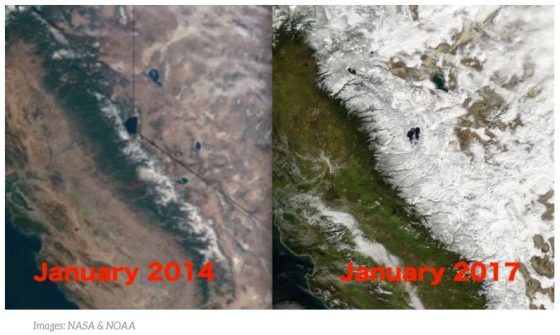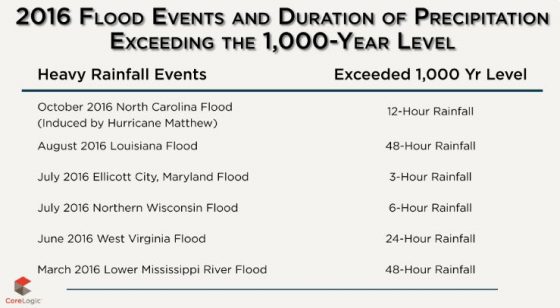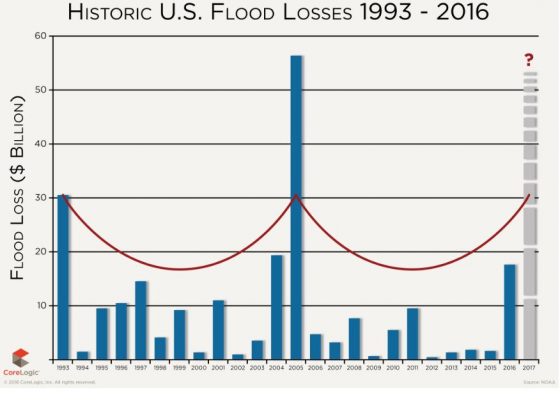One of the many hazards exposed by Hurricane Harvey occurred in Crosby, Texas, when the Arkema chemical plant suffered fires and small explosions on Aug. 31 and Sept. 1. Floodwaters caused the fires by penetrating the facility and shutting down the cooling systems designed to stabilize 500,000 pounds of highly flammable materials inside. This ultimately caused a mandatory evacuation for all residents within a 1.5-mile radius of the plant. Local news outlets reported that Arkema had no plan in place for six feet of flooding and its last risk assessment was submitted in 2013.
With Hurricane Irma being tracked at 175 miles per hour in the Caribbean, it is possible that chemical plants in the path of destruction—including Florida and the southeastern United States—may face a similar scenario. Regardless of the location of your plant, here are some tips that can help reduce potential business interruption and physical injury during a major natural disaster:
Update your risk assessment. Use Harvey as a catalyst to revisit your risk assessment, especially since new information has emerged about the potential for natural hazards or disasters that can trigger a chemical accident. As recently discussed, the best assessments do more than just feature a column of checked boxes to achieve an organization’s objectives and mitigate business interruption.
“They prioritize top risks, assign risk ownership, and most critically, integrate risk management and accountability into front line business decision-making,” says Dean Simone, PWC’s U.
S., Asia-Pacific, and Americas Cluster Risk Assurance Leader.
Submit the assessment to the EPA or other government-appointed body, like your state’s Commission on Environmental Quality. Your facility needs to be able to withstand significant damage to prevent further incidents and public harm. The feedback will hopefully provide some useful criticism to ensure public safety and business continuity.
According to ABC’s Houston affiliate:
In at least one of Arkema’s hazard mitigation plans filed with the federal government, plant officials acknowledged that flooding is a risk. The site sits in a FEMA “high-risk” floodplain that has flooded in the past, leading to a power failure. That time, the site only had six inches of water, a former plant worker said.
It was later revealed in an internal company timeline of events that Arkema did not move temperature-sensitive chemicals via refrigerated trucks and instead banked on its two backup systems, which failed. It seems certain that Arkema will have to consider at least six feet of floodwater when it revises its plan.
Institute an emergency plant management system. This may be included in your company’s risk assessment, and it is important that your employees also know the protocol when it comes to disaster prevention. This includes establishing the lines of authority and communication while on-site and during a catastrophe. OSHA provides guidance for chemical plant management in the event of a mass disaster.
Develop public-facing communications plans. Your communications team, led by an executive officer, should have advisory plans in place in anticipation of, during and following an emergency. The good news is that you don’t have to draft them from scratch. The Centers for Disease Control and Prevention (CDC) offers communications worksheets, templates and guides dedicated to water, sanitation and hygiene-related emergencies and outbreaks. You can customize these documents to reflect your organization’s capabilities and to alert nearby residents and businesses.
Be sure to issue advisories through all possible outlets, including social media. One thing Arkema did correctly was send press releases, incident statements and alerts via Twitter in addition to traditional outlets in order to keep as many people informed as possible.
Communicate with local authorities and emergency workers. All energy plants impact their local communities, surrounding areas and ecosystems. Your company’s hazard plans should be communicated to local fire and police departments and hospitals. This ensures that emergency workers know the potential dangers your plant faces in the event of a disaster and the steps you plan to take to mitigate them.




